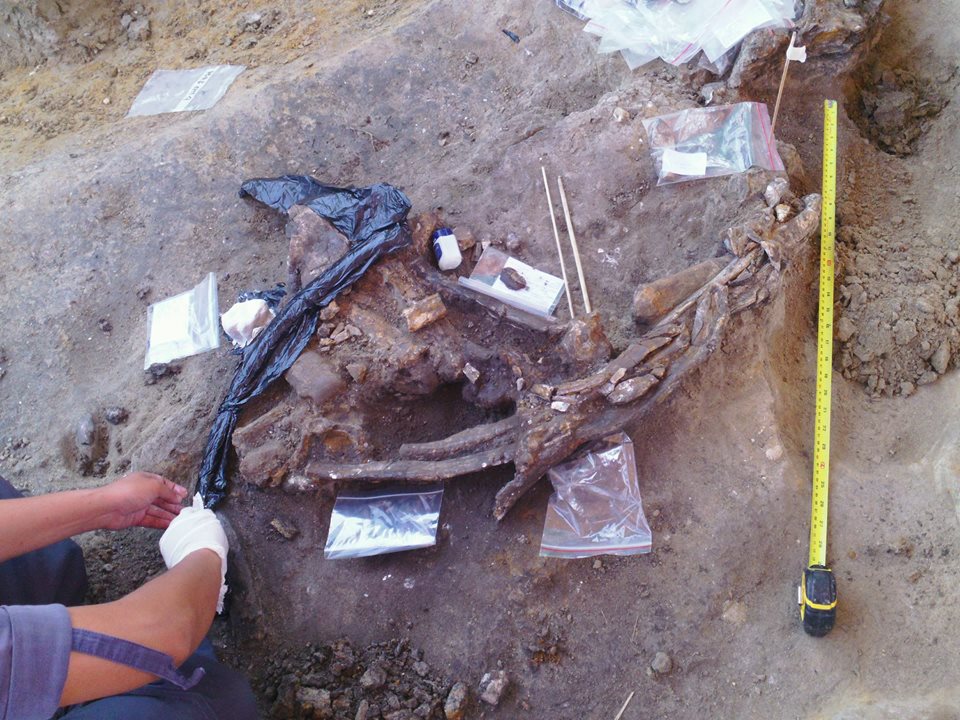Headline
‘Butchered’ rhino remains hint humans in PH 700,000 years ago

On-site in Rizal, Kalinga, an archaeologist casts a rhinoceros rib within a cluster of bones for careful retrieval from its original position where found and subsequently excavated. The fossils relating to this discovery and the published study are safeguarded at the National Museum, Manila. (Photo By M. Reyes, 2015 ©National Museum/Facebook)
A butchered rhinoceros skeleton found in the Philippines may just be a “crime scene” of a bloody history of animal cruelty, but dating back to be about 709,000 years ago with the presence of stone tools, this discovery may just have popped one of the biggest question marks in this day: Were there humans in the Philippines hundreds of thousands of years earlier than previously thought?
“We had the extraordinary luck to find a nearly complete, disarticulated rhinoceros,” paleonanthropologist Thomas Ingicco, lead author of the study, and associate professor at the Muséum National d’Histoire Naturelle said on May 2, Wednesday, according to an Agence France Presse (AFP) report.
The report further wrote that the analysis of the bones of the extinct species Rhinoceros philippinensis “showed ridges left by tools” that only humans could do. Thirteen of the creature’s bones had cut marks and areas where it was struck to obtain the marrow.
“We know that some species of human ate this rhino,” Ingicco said, adding, “But we don’t know if they killed it first, or found the carcass.”
In addition, more than 400 bones of other animals plus 49-knife-like flakes, and two hammers were found in Kalinga in Cagayan Valley.
The other bones were identified to be from a monitor lizard, Philippine brown deer, freshwater turtles, and stegodons – an extinct animal from the same family as elephants and mammoths.
Up until now, the earliest confirmed evidence of early humans in the Philippines came from a 67,000-year old foot bone in the mountain range of Sierra Madre. But after some dating techniques on the rhino’s range, the findings revealed that its age ranged from 631,000 to 777,000 years.
Since there were no direct clues that could pinpoint ‘who’ were the butchers in Kalinga, the researchers could only make guesses.
“I only can think of two sites where you have evidence of butchery activities, one is the famous site of Choukoutien in China and the other is Ngebung in the Sangiran Dome of Java, Indonesia. So we actually know very little about these early Middle Pleistocene hominins’ behavior in Southeast Asia,” Ingicco continued.
There was also the possibility that the butchers in Kalinga were connected to the ‘hobbits’ of Flores island in Indonesia, as some evidence suggests identical traits of ‘dwarfism’ based on the remains from the former and from Callao Cave also in Luzon island.
For the question of how the primitive man could have made it with about a thousand kilometers of open sea in between the islands, Ingicco said, “The colonialization could have happened ‘accidentally’ after a tsunami ripped up the coastline and created a temporary land bridge, a rare but documented phenomenon.”





















